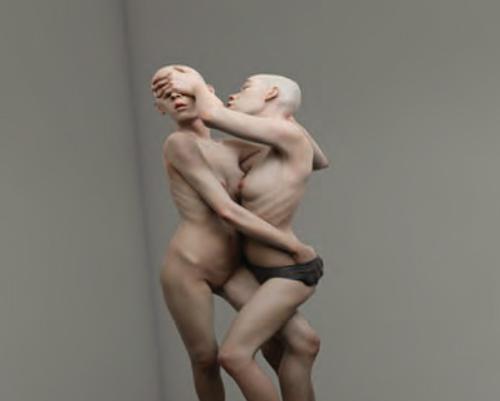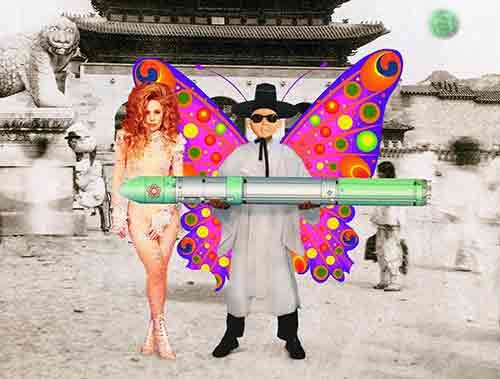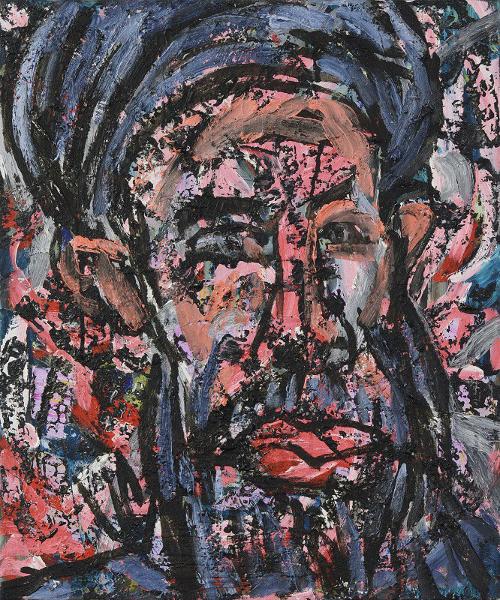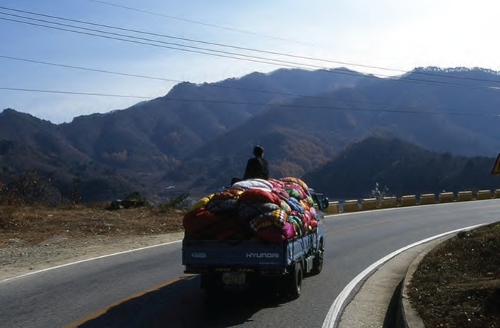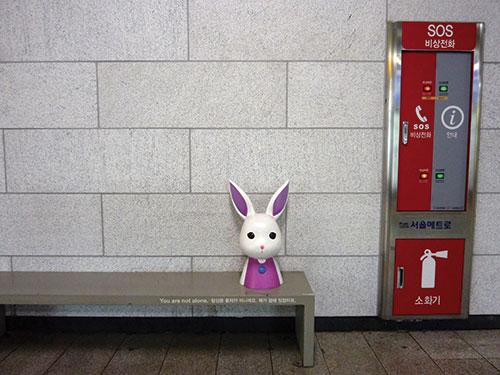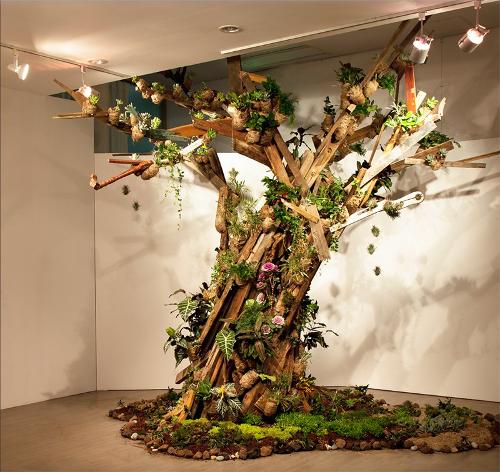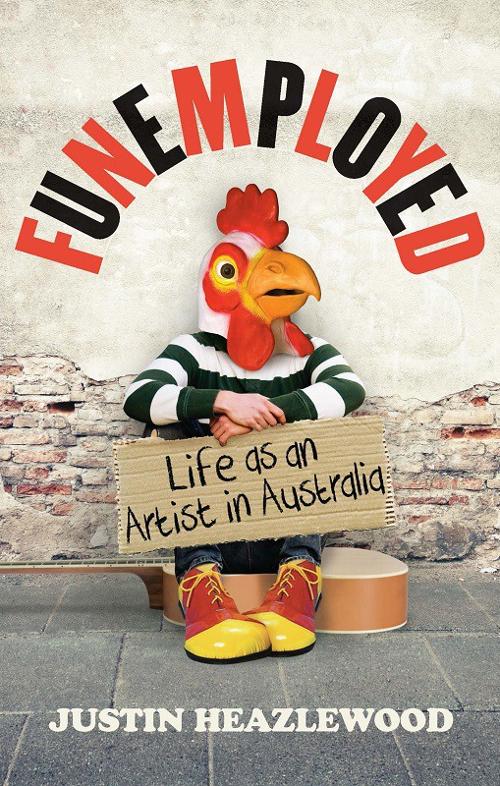
Tarnanthi (pronounced Tarnandee), meaning "new beginnings" in the Kaurna language, took over Adelaide occupying 22 venues to show Aboriginal and Torres Strait Islander art from across Australia. In this huge and varied selection of art by and about Aboriginal people, Tarnanthi presented multiple aspects of their lives, all the way from asserting sovereignty and re-examining archives to sloganeering, bush tucker and selfie-work. The presence of so many artists made audiences aware of their different countries, ongoing languages and stories. Yet to call this Festival a new beginning seems wrong, as it is really a continuation of what has been happening for a long time. Yes, there is some new work, new styles, but it is really about the incredible diversity and ongoing experimentation that has been present in art galleries and art centres in Australia for at least twenty years now, more in many cases.
Aboriginal and Torres Strait Islander art, buffeted in the marketplace by the GFC and foolish changes to superannuation regulations (can Malcolm Turnbull please do something about this?), still goes from strength to strength and great professionalism was evident. Clearly, there is also room for beginners, for mentoring and experimentation. A sense of art as a healing, constructive, community-building activity was very strong. Everyone that I met commended the generosity and warmth of Tarnanthi's artistic director, Nici Cumpston.
Among the exhibitions I would single out are Kapi Ungkupayi / He gave us Water at the SASA gallery, an exhibition with special magic. It tells a new dreaming story (tjukurpa) of a recent journey made by a group of women and shows their resourcefulness and reliance on the old stories and knowledge, as well as on God, in a frank and disarming manner. Even before you enter the gallery, you see small tjanpi (spinifex) birds in the window announcing the intense animation and energy inside. Then there are tjanpi goannas, the painted side of a car, small portraits of the desert finches who showed where the “holy water” was, and something new – tjanpi frames on the acrylic paintings flanking the storytelling installation. Curiously, the cloud made of strung-together gumnuts painted blue resonated as a positive echo of Yhonnie Scarce’s cloud Thunder Raining Poison of blown glass yams memorialising nuclear testing at Maralinga in the survey show at the Art Gallery of South Australia.
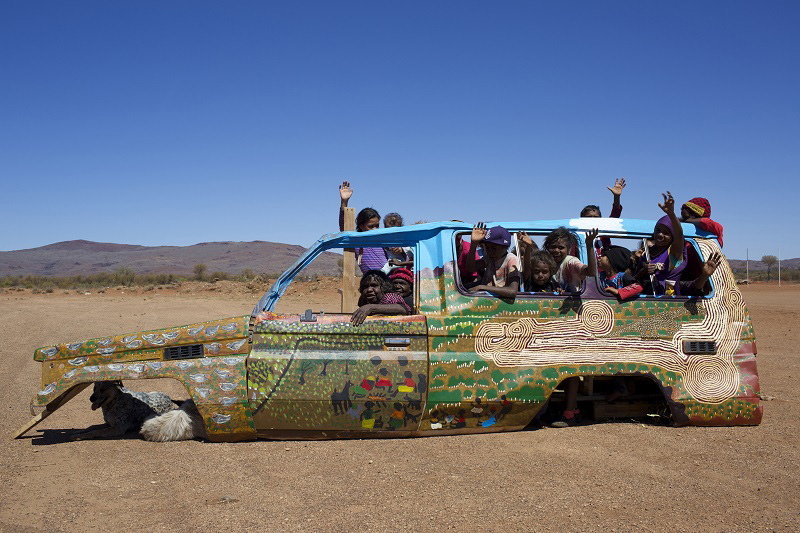
More magic was present in Nganmarra: The Container of Life at the Museum of Economic Botany, especially at the launch as the four makers from Ramingining taught visitors while sitting on the beautiful mats they had created, representing life itself. Then there was Balnhdhurr: A Lasting Impression, the thought-provoking twenty-year retrospective of prints from Yirrkala Print Space at Light Square Gallery. Printmaking connects brilliantly with the graphic energy of much Aboriginal art as confirmed in a series of striking new prints Nyanganyi Kuru Nganampangku Seeing our stories through our eyes made by Cicada Press with Desart artists shown at the State Library.
A sense of the cross-cultural supernatural was present in both Warwick Thornton’s Way of the Ngangkari (traditional healer) Jedi figures against desert skies (which lacked only the electrifying phhzzzt sound of laser swords) at the Art Gallery of South Australia and in Brad Harkin’s Palm Valley about traditional knowledge and its suppression in the Project Space at the Contemporary Art Centre of South Australia.
At the State Library the Desart Photography Prize Nyankuntjaka (have a look) showed vivid images of daily life. These works bear strong witness to the roles played by Aboriginal people working in the art industry as documenters, developers, technicians, planners, writers, curators, directors and visionaries.
If you have been looking at Aboriginal art for a while, there were familiar strengths, such as Tiwi art, art from Aurukun, wooden animals from Utopia, bark paintings from the Top End, acrylic paintings from the Centre, Yvonne Koolmatrie’s weaving from the Coorong (a fragrant retrospective).
Bound and Unbound: Sovereign Acts II by four Adelaide-based writers, actors and performers shone a light on the colonising roles of the collecting institutions along North Terrace. Their work approaches the complexity of decolonisation in multiple ways and references Vietnamese writer and theorist Trinh Min-ha, quoting from her book Woman, Native, Other: “The story never really begins nor ends, even though there is a beginning and an end to every story, just as there is a beginning and end to every teller.”

